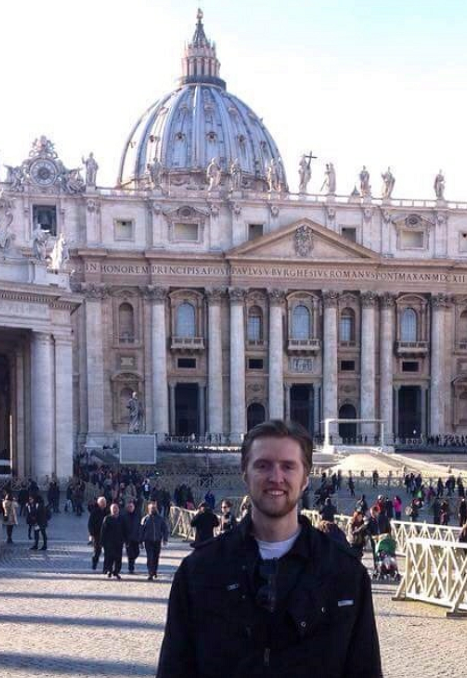Little Sisters of the Poor House for the Aged
 Wednesday, November 25, 2020 at 4:12AM |
Wednesday, November 25, 2020 at 4:12AM |  Michael Rainville Jr |
Michael Rainville Jr | Article by Michael Rainville, Jr.
If you were to stand on the corner of Second Street NE and Broadway, you would notice a new apartment building being built on the southwest corner of the intersection, a recently opened independent living facility for Catholic Eldercare on the southeast corner, another apartment building on the northwest corner, and standing amongst these new developments on the northeast corner is one of the older buildings that can be found in Minneapolis. Stonehouse Square has provided quality living space for over forty years, but the building is much older than that.
A Catholic religious order known as the Little Sisters of the Poor first came to Minneapolis in 1889 with the goal of opening a home for the older citizens of Minneapolis. Once they were settled in, they hired local architect Frederick G. Corser, who also designed Westbrook Hall at the University of Minnesota and served as the architect for the Minneapolis Fire Department. Throughout his career, Corser was more concerned with functionality than decoration, and he stayed true to that when designing the Home for the Aged.
 Little Sisters of the Poor Building, 1967
Little Sisters of the Poor Building, 1967
The first phase of construction took place in 1895 when Corser built a three-and-a-half story wood framed, yellow brick building and an attached chapel. The Little Sisters of the Poor and its residents quickly outgrew that facility, and in 1905, Corser came back to make an addition, the east wing. Even though Corser paid more attention to a building’s function, he still wanted his addition to look original, and he did just that.
The Sisters and residents once again outgrew their building, so in 1914, plans to construct a west wing were made. This time, the Sisters went with the firm Kees and Colburn who used steel, brick and tile. However, in order to stay true to the original building and out of respect for Corser, the exterior was made with yellow bricks and wood framing. This turned out to be a great idea as it blended in perfectly with the existing building.
 1948 photo of a sister helping a resident with physical therapy.
1948 photo of a sister helping a resident with physical therapy.
The Little Sisters of the Poor Home for the Aged, also called St. Joseph’s Home, provided top notch care and great facilities for their residents for over eighty years in Northeast Minneapolis. However, as the years went on, the building kept deteriorating and newer standards and codes meant that the Sisters would have to spend a fortune to bring the building up to code. 1977 was the last year this building housed the Sisters and their elderly residents before they moved to a new location over in St. Paul.
When the Sisters left for our neighboring city, it was a huge loss for the surrounding neighborhoods. However, Northeast Minneapolis did not have to wait too long for a new senior care organization to take root in the area. Just a couple blocks away down Second Street, Catholic Eldercare opened their now named Albert J. Hofstede Care Center in 1983, and they picked up where the Sisters left off.
 2019 photo by Mark Peterson for the Northeaster.
2019 photo by Mark Peterson for the Northeaster.
The Minneapolis Housing and Redevelopment Authority purchased the Home for the Aged in 1977, and the next year it was included in the National Register of Historic Places. Soon after, a private developer bought it with the intent of preserving the historic architecture for years to come and renovate the interior. They even kept the original brick and wrought iron fence that borders the property. After the successful renovation, the seventy-one-unit building was ready to house residents once again, and to this day, the building provides excellent living for Northeasters.
There may currently be a development boom in Minneapolis, but during this Thanksgiving week I’m thankful that I live in a city where the old and new can coexist in a way that creates a unique atmosphere and character that makes Minneapolis, well, Minneapolis.
- - - - - - - - - - - - - - - - - - - - - - - - - -
 About Michael Rainville, Jr.
About Michael Rainville, Jr.
A 6th generation Minneapolitan, Michael Rainville Jr. received his B.A. in History from the University of St. Thomas, and is currently enrolled in their M.A. in Art History and Certificate in Museum Studies programs. Michael is also a historic interpreter and guide at Historic Fort Snelling at Bdote and a lead guide at Mobile Entertainment LLC, giving Segway tours of the Minneapolis riverfront for 7+ years. Contact: mrainvillejr@comcast.net. Click here for an interactive map of Michael's past articles.
